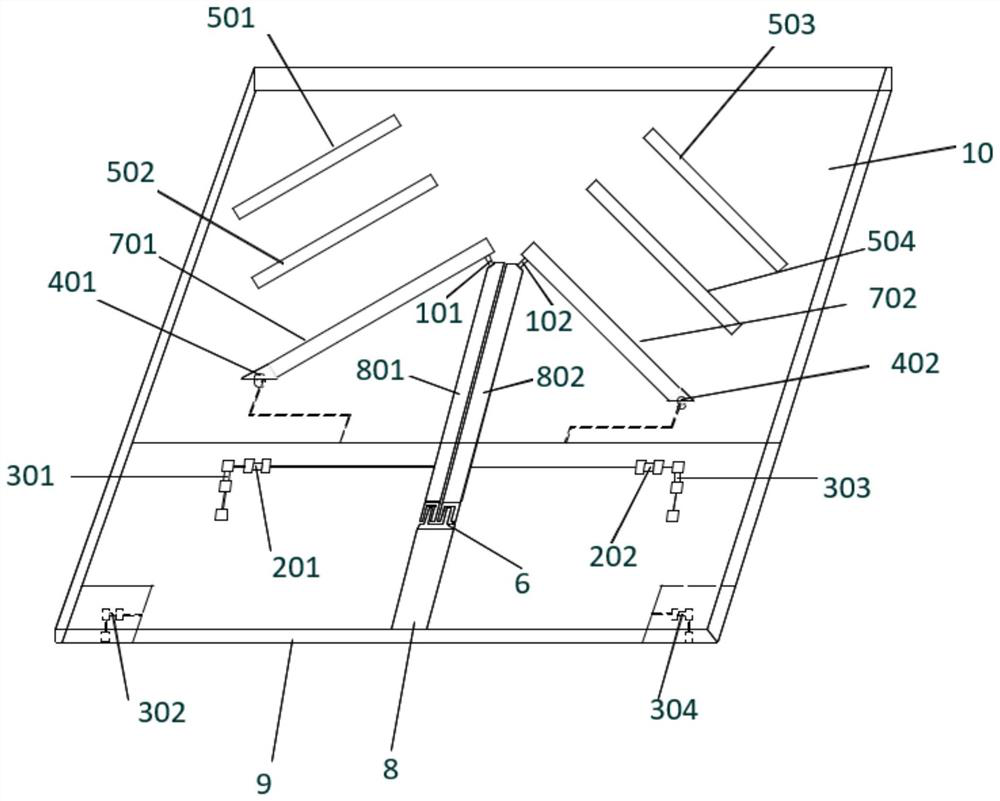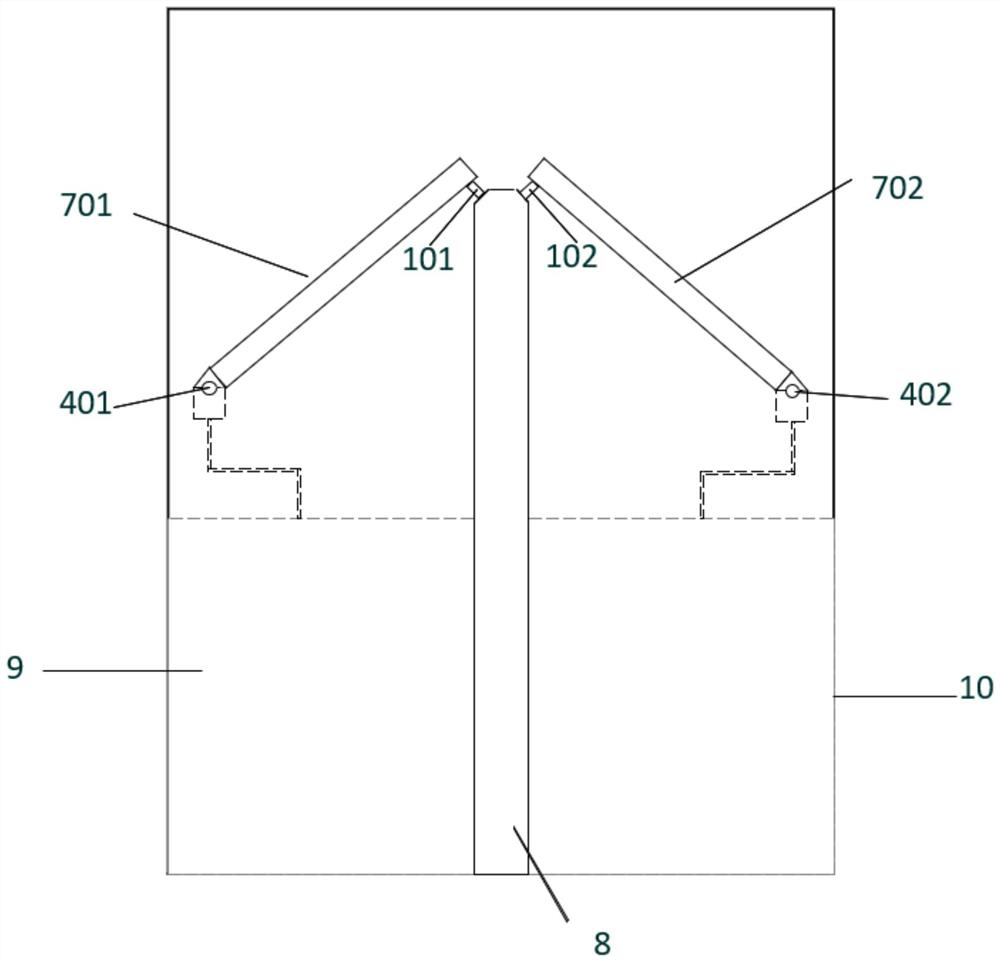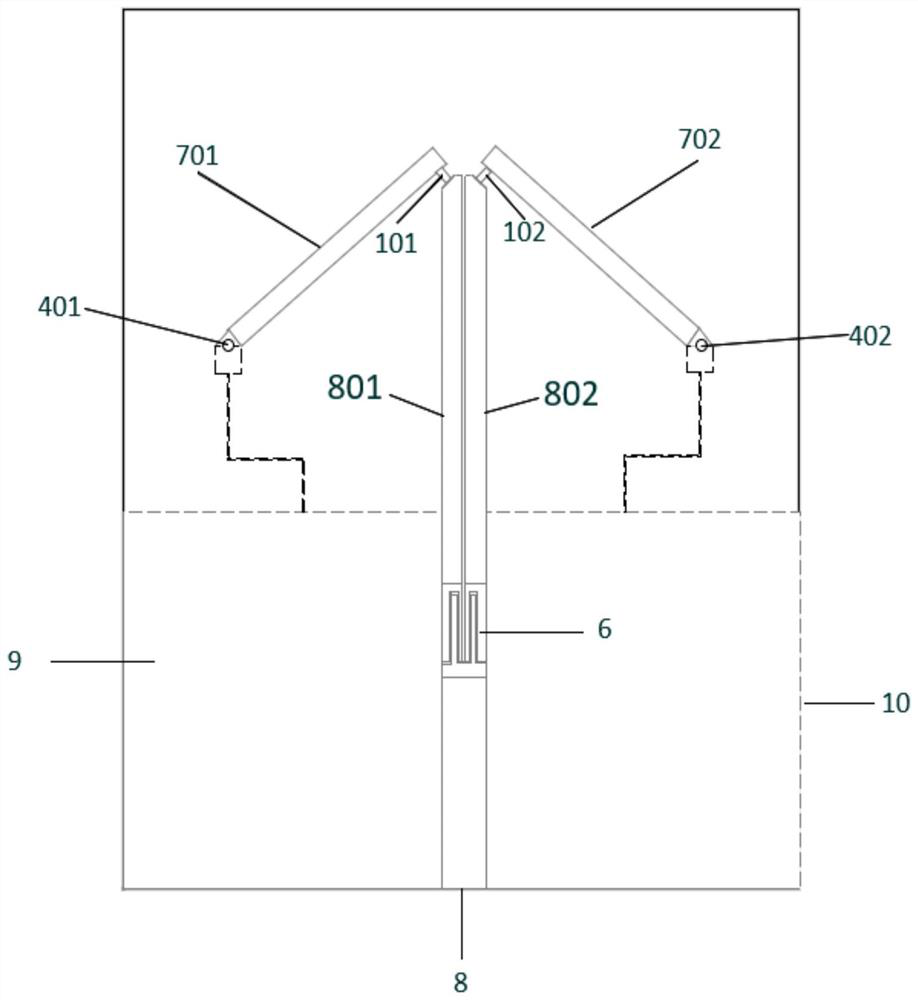Pattern reconfigurable antenna based on PIN tube
A technology for reconstructing antennas and directional patterns, applied in the directions of antennas, antenna grounding devices, radiating element structures, etc., can solve the problems of high profile and large antenna volume, etc., and achieve the effect of low profile and small size
- Summary
- Abstract
- Description
- Claims
- Application Information
AI Technical Summary
Problems solved by technology
Method used
Image
Examples
Embodiment
[0062] A pattern reconfigurable antenna based on PIN tube, such as figure 1 , figure 2 , image 3 and Figure 4 As shown, it includes an antenna radiation unit, a dielectric substrate 10, a metal floor 9, a parasitic unit, a first PIN tube 101, a second PIN tube 102, a first PIN tube bias circuit and a second PIN tube bias circuit;
[0063] The antenna radiation unit includes a microstrip line 8, a first metal sheet 701 and a second metal sheet 702;
[0064] The microstrip line, the first metal sheet 701, the second metal sheet 702, the parasitic unit, the first PIN tube 101 and the second PIN tube 102 are located on the upper surface of the dielectric substrate;
[0065] The metal floor is located on the lower surface of the dielectric substrate;
[0066] The microstrip line is located in the center of the upper surface of the dielectric substrate, and two sides of one end of the microstrip line are respectively connected to one end of the first PIN tube 101 and one end ...
Embodiment 2
[0099] In this embodiment, Figure 8 , Figure 9 , Figure 10 It is the simulated performance when the antenna is in the third mode 3 working state. Figure 8 is the S11 parameter, and it can be seen from the figure that the impedance bandwidth of the antenna in the third mode 3 working state is 3.27 GHz to 3.67 GHz, and the relative bandwidth is 11.5%. Figure 9 Given the radiation pattern when the antenna is in the third mode 3 working state at 3.5GHz, Figure 10 Given the change of gain with frequency in the maximum radiation direction, it can be seen from the figure that the maximum radiation direction of the antenna at 3.5GHz when the antenna is in the third mode 3 working state points to 50° of the xoy plane, and the gain is 6.42dBi.
Embodiment 3
[0101] In this embodiment, Figure 11 , Figure 12 and Figure 13 It is the simulated performance when the antenna is in the second mode 2 working state. Figure 11 is the S11 parameter, and it can be seen from the figure that the impedance bandwidth of the antenna in the second mode 2 working state is 3.26 GHz to 3.66 GHz, and the relative bandwidth is 11.5%. Figure 12 Given the radiation pattern when the antenna is in the second mode 2 working state at 3.5GHz, Figure 13 Given the change of gain with frequency in the maximum radiation direction, because the antenna is in the second mode 2 working state, it is a two-way radiation mode, that is, there are two maximum lobes in the pattern, so the maximum radiation direction of the pattern at 3.5GHz points to are -50° and 50° of the xoy plane, and the gains are 4.57dBi and 4.45dBi, respectively.
PUM
 Login to View More
Login to View More Abstract
Description
Claims
Application Information
 Login to View More
Login to View More - R&D
- Intellectual Property
- Life Sciences
- Materials
- Tech Scout
- Unparalleled Data Quality
- Higher Quality Content
- 60% Fewer Hallucinations
Browse by: Latest US Patents, China's latest patents, Technical Efficacy Thesaurus, Application Domain, Technology Topic, Popular Technical Reports.
© 2025 PatSnap. All rights reserved.Legal|Privacy policy|Modern Slavery Act Transparency Statement|Sitemap|About US| Contact US: help@patsnap.com



